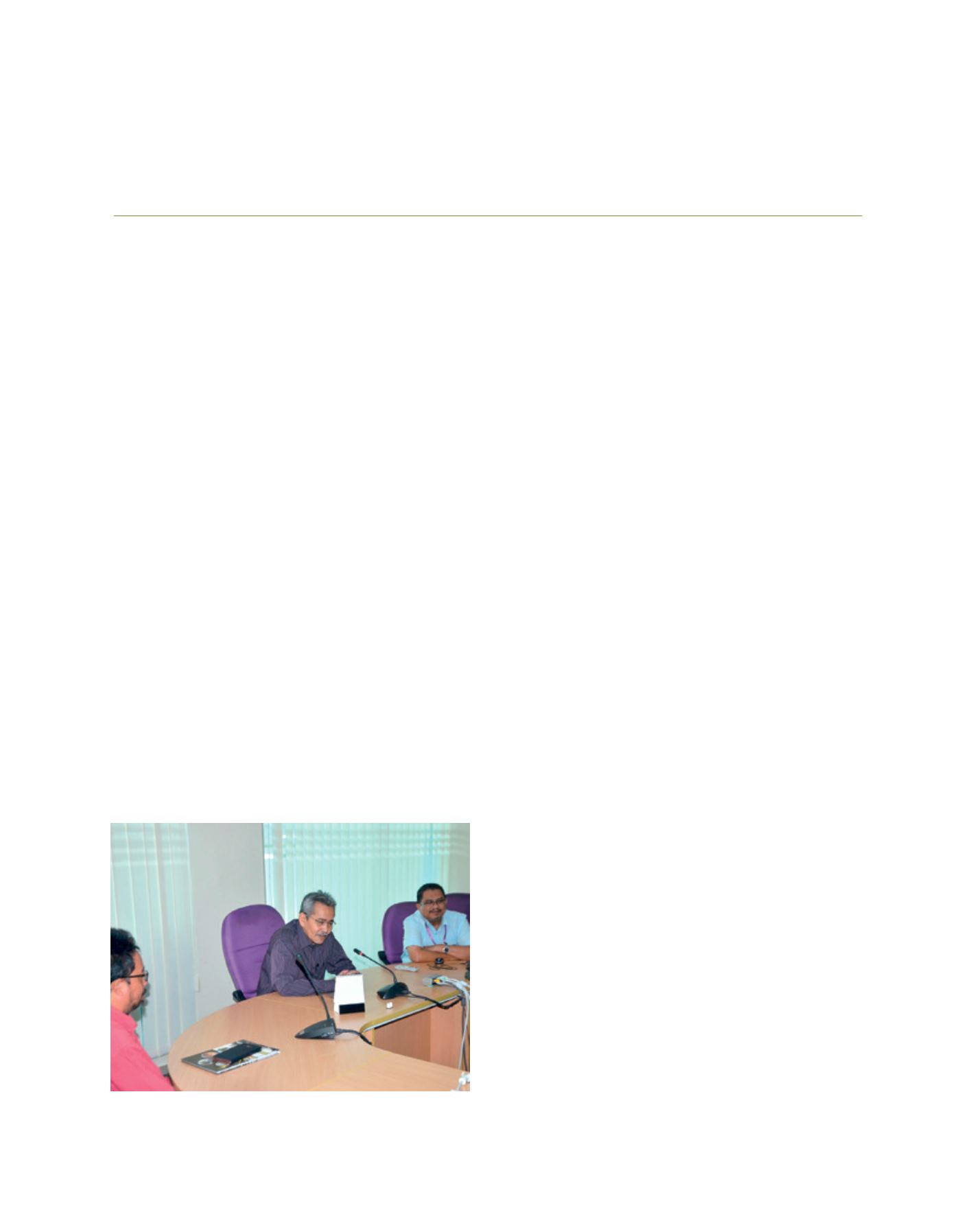

[
] 184
Land use and the restoration of degraded land
towards sustainable development in Malaysia
Omar Osman, Kamarulazizi Ibrahim, Kanayathu Koshy, Fauziah Ahmad
and Ahmad Shukri Yahaya, Universiti Sains Malaysia, Penang
W
ith a rising population and increasing
destruction of fertile soil and agricultural
land, the need to promote prudent land
management has become an integral part of sustain-
able development. Although land degradation leading to
desertification is not a serious issue in Malaysia, there
is increasing concern about landslide and slope-land
stability in the context of development activities linked
to construction and cultivation.
Taking those negatives and developing a positive approach
that looks at rainfall variability, climate change, risk assess-
ment, slope monitoring and computer-aided slope stability
scenario generation are key priorities. Within the new
vision of Universiti Sains Malaysia (USM) to transform
higher education for a sustainable tomorrow, a risk-
reduced development pathway that integrates sustainability
challenges in natural sectors with cross-sectoral areas such
as climate change, population and production has been
gaining ground.
Developed as a result of the United Nations Conference
on Environment and Development 1992,
1
the United
Nations Convention to Combat Desertification (UNCCD)
2
is a unique instrument that has brought attention to the land
degradation affecting some of the most vulnerable people
and ecosystems in the world. The UNCCD benefits from
the largest membership of the three Rio conventions and is
increasingly recognized as an agreement that can make an
important contribution to the achievement of sustainable
development and poverty reduction.
3
In order to attract
more attention to climate-compatible development, the
United Nations launched the Decade on Deserts and the
Fight against Desertification (UNDDD).
4
During the launch
of the decade, the United Nations Secretary General Ban
Ki-moon said: “Continued land degradation — whether
from climate change, unsustainable agriculture or poor
management of water resources — is a threat to food secu-
rity, leading to starvation among the most acutely affected
communities and robbing the world of productive land.”
This summarises the issues and connects CCD to other
development goals such as the Millennium Development
Goals and by extension the Sustainable Development Goals
to be finalized at the United Nations in September 2015.
5
Based on the evapotranspiration to rainfall ratio of 0.005-
0.65, most of Malaysia does not fall under the definition of
deserts. However, Malaysia is not devoid of land degrada-
tion problems, associated mostly with forest harvesting, hill
and agricultural development, and mineral exploitation. In
order to manage challenges in these areas, the mitigation
measures taken mainly involve policies, legislation, guide-
lines, soil conservation practices and awareness campaigns.
The following is based on Malaysia’s reports to UNCCD
in 2006 and 2014. Three major policies worth mention-
ing in this regard are the National Forest Policy (NFP),
6
National Agricultural Policy (NAP)
7
and National
Urbanization Policy (NUP).
8
The implementation of NAP
involves measures such as: not opening new lands, using
underutilized and marginal lands, mixed farming, integra-
tion of livestock into plantation forests (rubber and oil
palm), and soil mapping. Under NFP the measures taken
include setting aside 4.84 million hectares as permanent
reserved forest, sustainable management of forest through
classification into protection and production forest, forest
for timber, soil protection, flood control, water catchment,
sanctuary for wildlife, virgin jungle, amenity, and research
purposes. As part of NUP, the Department of Town and
Country Planning in collaboration with various other
departments and agencies has developed a multisectoral
sustainable land use master plan for the whole country.
National development follows these plans and practices.
9
Professor Dato’ Omar Osman, USM Vice-Chancellor and Professor
Kamarulazizi Ibrahim, Director of the CGSS discuss USM’s Five-Year Plan
for sustainability implementation
Image: USM 2015
L
iving
L
and
















